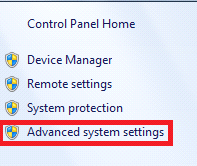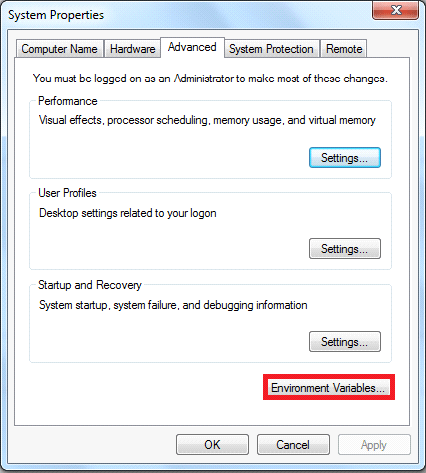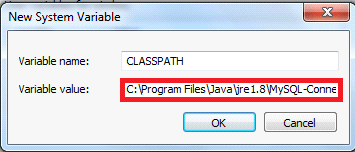How to Set CLASSPATH in JavaCLASSPATH: CLASSPATH is an environment variable which is used by Application ClassLoader to locate and load the .class files. The CLASSPATH defines the path, to find third-party and user-defined classes that are not extensions or part of Java platform. Include all the directories which contain .class files and JAR files when setting the CLASSPATH. You need to set the CLASSPATH if:
The CLASSPATH depends on what you are setting the CLASSPATH. The CLASSPATH has a directory name or file name at the end. The following points describe what should be the end of the CLASSPATH.
The default value of CLASSPATH is a dot (.). It means the only current directory searched. The default value of CLASSPATH overrides when you set the CLASSPATH variable or using the -classpath command (for short -cp). Put a dot (.) in the new setting if you want to include the current directory in the search path. If CLASSPATH finds a class file which is present in the current directory, then it will load the class and use it, irrespective of the same name class presents in another directory which is also included in the CLASSPATH. If you want to set multiple classpaths, then you need to separate each CLASSPATH by a semicolon (;). The third-party applications (MySQL and Oracle) that use the JVM can modify the CLASSPATH environment variable to include the libraries they use. The classes can be stored in directories or archives files. The classes of the Java platform are stored in rt.jar. There are two ways to ways to set CLASSPATH: through Command Prompt or by setting Environment Variable. Let's see how to set CLASSPATH of MySQL database: Step 1: Click on the Windows button and choose Control Panel. Select System. 
Step 2: Click on Advanced System Settings. 
Step 3: A dialog box will open. Click on Environment Variables. 
Step 4: If the CLASSPATH already exists in System Variables, click on the Edit button then put a semicolon (;) at the end. Paste the Path of MySQL-Connector Java.jar file. If the CLASSPATH doesn't exist in System Variables, then click on the New button and type Variable name as CLASSPATH and Variable value as C:\Program Files\Java\jre1.8\MySQL-Connector Java.jar;.; Remember: Put ;.; at the end of the CLASSPATH. 
Difference between PATH and CLASSPATH
How to Set CLASSPATH in Windows Using Command PromptType the following command in your Command Prompt and press enter. In the above command, The set is an internal DOS command that allows the user to change the variable value. CLASSPATH is a variable name. The variable enclosed in percentage sign (%) is an existing environment variable. The semicolon is a separator, and after the (;) there is the PATH of rt.jar file. How ext folder works in JavaThe ext directory works a bit like the CLASSPATH. ext directory is the part of the class loading mechanism. The classes which are available within JARs in the ext directory are available to Java applications. The following table demonstrates the key difference between the CLASSPATH and Extension Mechanism:
The mechanism will pick up all .jar files from the extension directory even if the file does not have the .jar extension. The implementation of this is that if one can change the name of a jar placed in a classpath directory to have an extension other than .jar. The wildcard (*) does not pick it up. This technique will not work with the extension directory. Let's understand the execution process through an example. A.java B.java Compile the A.java file. we will archive the compiled A.class file into A.jar. Place this JAR file into another directory than the compiled B.class file. To demonstrate the use of the classpath, we place the A.jar file in a directory C:\JavaPrograms and will access that JAR through wildcard (*) for B to use. We found that B can still load the A.class while we had deleted it from the current directory. The Java launcher was explicitly looked for C:\JavaProgram. It is also possible to have the class loaded without its presence in the same directory and explicit classpath specification. It is often referred to as a benefit of Using the extension mechanism because all applications which are using that JRE can see the same classes without the need to specify them on the classpath explicitly. What happens if we change the name of A.jar into A.backup in the same CLASSPATH-referenced directory. NoClassDefFoundError is encountered when we do the same because the CLASSPATH-reference does not have the .jar extension.
Next TopicJava Tutorial
|
 For Videos Join Our Youtube Channel: Join Now
For Videos Join Our Youtube Channel: Join Now
Feedback
- Send your Feedback to [email protected]
Help Others, Please Share










